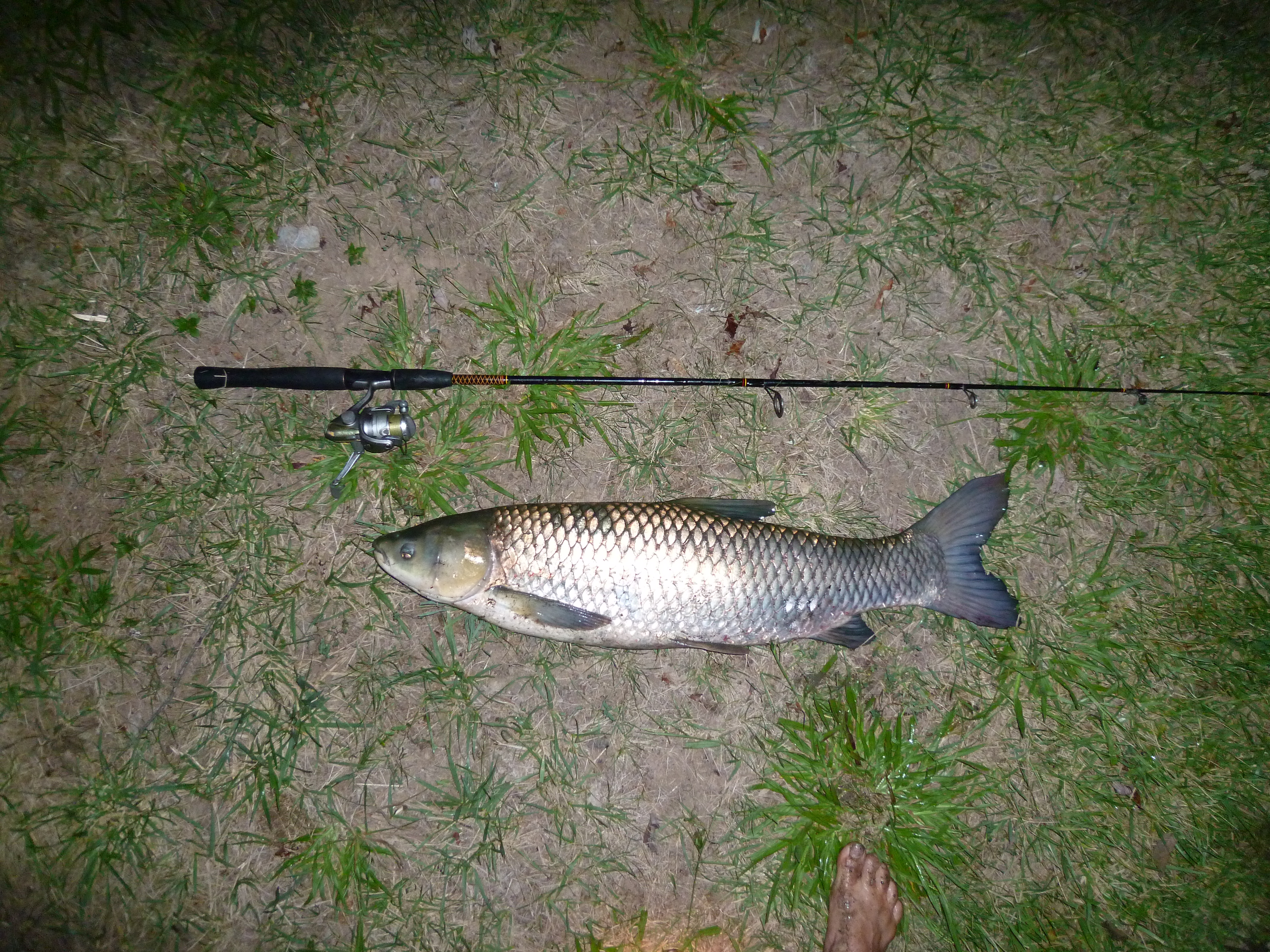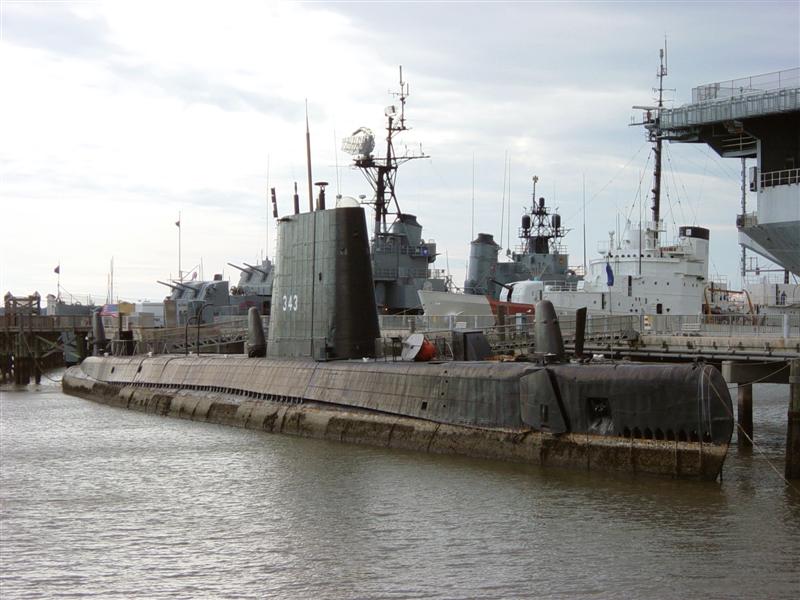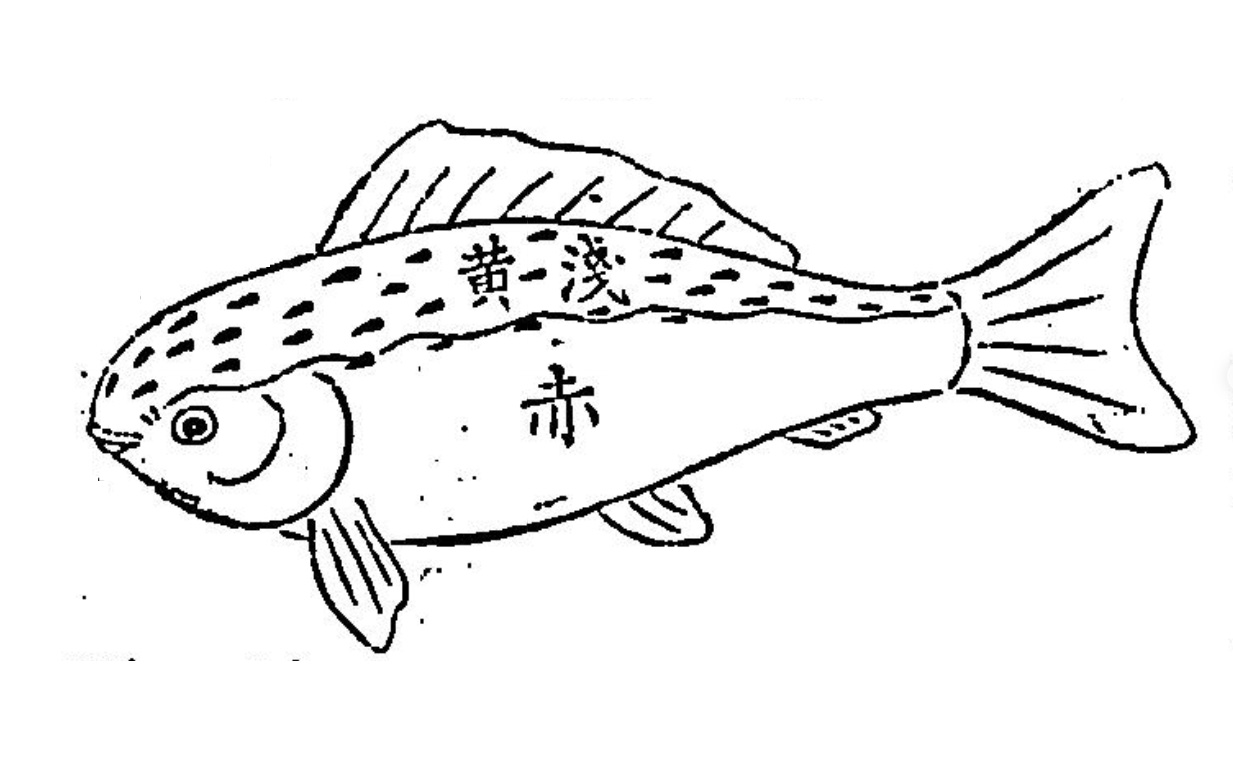|
Spring Viraemia Of Carp
Spring viraemia of carp, also known as swim bladder inflammation, is caused by Spring viremia of carp virus (''Sprivivirus cyprinus''). It is listed as a notifiable disease under the World Organisation for Animal Health. Impacted species Spring viraemia of carp virus has been shown to infect a wide variety of fish species including silver carp, grass carp, crucian carp, and bighead carp. It has also been shown experimentally to infect other fish species including northern pike, Guppy, guppies, zebrafish, and pumpkinseed. It is considered to be a major threat to native fish populations, especially farmed fish including ornamental koi and common carp. Pathology Clinical symptoms of viral infection include external hemorrhaging, pale gills, and ascites. In some cases, mortality can occur without any apparent clinical signs of the disease. The virus has been found in high concentrations in the liver and kidney, but lower numbers of virions have been isolated from the spleen. The ... [...More Info...] [...Related Items...] OR: [Wikipedia] [Google] [Baidu] |
World Organisation For Animal Health
The World Organisation for Animal Health (WOAH), formerly the (OIE), is an intergovernmental organisation founded in 1924, coordinating, supporting and promoting animal disease control. The primary objective of WOAH is to control epizootic diseases and prevent their spread. Further objectives include the sharing of transparent, scientific information; international solidarity; sanitary safety; and the promotion of veterinary services‚ food safety and animal welfare. WOAH is recognised by the World Trade Organization, World Trade Organisation (WTO) as an international reference for the safe trade of animals and animal products regarding risks due to animal diseases and zoonoses. WOAH is not a part of the United Nations (UN) system. Its autonomy is institutional and financial, and its own constitutional texts govern its activities. Since its first General Session held in Paris, the Organisation has carried out its work under the authority of a committee consisting of delegates ... [...More Info...] [...Related Items...] OR: [Wikipedia] [Google] [Baidu] |
Silver Carp
The silver carp or silverfin (''Hypophthalmichthys molitrix'') is a species of freshwater cyprinid fish, a variety of Asian carp native to China and eastern Siberia, from the Amur River drainage in the north to the Xi Jiang River drainage in the south. Although a threatened species in its natural habitat, it has long been cultivated in China as one of the "Four Famous Domestic Fish" (''四大家鱼'') together with bighead carp, black carp and grass carp. By weight, more silver carp are produced worldwide in aquaculture than any other species of fish except for the grass carp. Silver carp are usually farmed in polyculture with other Asian carp, or sometimes with catla or other fish species. The species has also been introduced, or spread by connected waterways, to at least 88 countries around the world. The reason for importation was generally for use in aquaculture, but enhancement of wild fisheries and water quality control have also been intended on occasion. In ... [...More Info...] [...Related Items...] OR: [Wikipedia] [Google] [Baidu] |
Grass Carp
The grass carp (''Ctenopharyngodon idella'') is a species of large herbivorous freshwater fish in the family Cyprinidae, native to the Pacific Far East, with a native range stretching from northern Vietnam to the Amur River on the Sino-Russian border.Mandrak and Cudmore. 2004''Biological Synopsis of Grass Carp (Ctenopharyngodon idella)''. This Asian carp is the only species of the genus ''Ctenopharyngodon''. Grass carp are resident fish of large turbid rivers and associated floodplain lakes/wetlands with a wide range of temperature tolerance, and spawn at temperatures of . It has been cultivated as a food fish in China for centuries, being known as one of the "Four Great Domestic Fish" ( zh, 四大家鱼), but was later introduced to Europe and the United States for aquatic weed control, becoming the fish species with the largest reported farmed production globally, over five million tonnes per year. [...More Info...] [...Related Items...] OR: [Wikipedia] [Google] [Baidu] |
Crucian Carp
The crucian carp (''Carassius carassius'') is a medium-sized member of the common carp family Cyprinidae. It occurs widely in northern European regions. Its name derives from the Low German ''karusse'' or ''karutze'', possibly from Medieval Latin ''coracinus'' (a kind of river fish). Distribution The crucian carp is a widely distributed European species, its range spanning from England to Russia; it is found as far north as the Arctic Circle in the Scandinavian countries, and as far south as central France and the region of the Black Sea. Its habitat includes lakes, ponds, and slow-moving rivers. It has been established that the fish is native to England and not introduced. The crucian carp is a medium-sized cyprinid, typically in body length, and rarely exceeds in weight over , but a maximum total length of has been reported for a male,Koli, L. 1990 Suomen kalat. ishes of Finland Werner Söderström Osakeyhtiö. Helsinki. 357 p. (in Finnish). Fishbase Ref. 6114 and the hea ... [...More Info...] [...Related Items...] OR: [Wikipedia] [Google] [Baidu] |
Bighead Carp
The bighead carp (''Hypophthalmichthys nobilis'') is a species of cyprinid freshwater fish native to East Asia, and is one of several Asian carps introduced into North America. It is one of the most intensively exploited fishes in fish farming, with an annual worldwide production of over three million tonnes in 2013, principally from China. They are omnivores, consuming both algae and zooplankton. Bighead carp, together with black carp, silver carp, and grass carp, make up the culturally important "four famous domestic fishes" used in polyculture in China for over a thousand years. It is widely farmed for food and chinese medicine. Description The bighead carp has a large, scaleless head, a large mouth, and eyes located very low on the head. Adults usually have a mottled silver-gray coloration. It is a large fish; a typical length is , and maximum observed size of and . Distribution Bighead carp are native to large rivers and are associated with floodplain lakes of eas ... [...More Info...] [...Related Items...] OR: [Wikipedia] [Google] [Baidu] |
Northern Pike
The northern pike (''Esox lucius'') is a species of carnivorous fish of the genus ''Esox'' (pikes). They are commonly found in brackish water, moderately salty and fresh waters of the Northern Hemisphere (''i.e.'' holarctic in distribution). They are known simply as a pike (Plural, : pike) in Great Britain, Ireland, most of Eastern Europe, Canada and the United States, U.S., although in the Midwestern United States, they may just be called a Northern. Pike can grow to a relatively large size. Their average length is about , with maximum recorded lengths of up to and maximum weights of . The International Game Fish Association, IGFA currently recognises a pike caught by Lothar Louis on Greffern Lake, Germany, on 16 October 1986, as the all-tackle world-record holding northern pike. Northern pike grow to larger sizes in Eurasia than in North America, and in coastal Eurasian regions than inland ones. Etymology The northern pike gets its common name from its resemblance to the ... [...More Info...] [...Related Items...] OR: [Wikipedia] [Google] [Baidu] |
Guppy
The Greater Underwater Propulsion Power Program (GUPPY) was initiated by the United States Navy after World War II to improve the submerged speed, maneuverability, and endurance of its submarines. (The "Y" in the acronym was added for pronounceability.) The navy began the program by testing and reverse engineering two German Type XXI U-boats— and —obtained as war reparation. That analysis led to four goals—increasing the submarines' battery capacity, streamlining the boats' structures, adding snorkels, and improving fire control systems. The navy immediately focused on designing a new class of submarine, but the Bureau of Ships believed the fleet of existing , , and submarines could be modified to incorporate the desired improvements. In June 1946, the Chief of Naval Operations approved the GUPPY project. The initial two-boat test program, implemented by the Portsmouth Naval Shipyard, eventually grew into several successive conversion programs. Those upgrades proceed ... [...More Info...] [...Related Items...] OR: [Wikipedia] [Google] [Baidu] |
Zebrafish
The zebrafish (''Danio rerio'') is a species of freshwater ray-finned fish belonging to the family Danionidae of the order Cypriniformes. Native to South Asia, it is a popular aquarium fish, frequently sold under the trade name zebra danio (and thus often called a " tropical fish" although it is both tropical and subtropical). The zebrafish is an important and widely used vertebrate model organism in scientific research, particularly developmental biology, but also gene function, oncology, teratology, and drug development, in particular pre-clinical development. It is also notable for its regenerative abilities, and has been modified by researchers to produce many transgenic strains. Taxonomy The zebrafish is a derived member of the genus '' Brachydanio'', of the family Cyprinidae. It has a sister-group relationship with '' Danio aesculapii''. Zebrafish are also closely related to the genus '' Devario'', as demonstrated by a phylogenetic tree of close species. Distri ... [...More Info...] [...Related Items...] OR: [Wikipedia] [Google] [Baidu] |
Pumpkinseed
The pumpkinseed (''Lepomis gibbosus''), also referred to as sun perch, pond perch, common sunfish, punkie, sunfish, sunny, and kivver, is a small to medium–sized freshwater fish of the genus ''Lepomis'' (true sunfishes), from the sunfish family (biology), family (Centrarchidae) in the order (biology), order Centrarchiformes. It is endemism, endemic to eastern North America. Etymology ''Lepomis'', in Greek, means 'scaled gill cover' and ''wikt:gibbosus, gibbosus'' means 'humped'. The defining characteristic of a pumpkinseed sunfish is the bright red spot at the tip of the ear flap. The pumpkinseed sunfish is widely recognized by its shape of a pumpkin seed, from which its common name comes. See also Wiktionary link below. Description Pumpkinseeds have a body shaped much like a pumpkin seed (thus the common name), typically about but up to in length. They typically weigh less than , with the world record being caught by Robert Warne while fishing Honeoye Lake, Upstate New ... [...More Info...] [...Related Items...] OR: [Wikipedia] [Google] [Baidu] |
Ornamental Koi
, or more specifically , are colored varieties of carp (''Cyprinus'' sp.) that are kept for decorative purposes in outdoor koi ponds or water gardens. Koi is an informal name for the colored variants of carp kept for ornamental purposes. There are many varieties of ornamental koi, originating from breeding that began in Niigata, Japan in the early 19th century.Japanese Ornamental Koi Carp: Origin, Variation and Genetics May 2015 Several varieties are recognized by Japanese breeders and owners, distinguished by coloration, patterning, and scalation. Some of the major colors are white, black, red, orange, yellow, blue, brown and cream, besides metallic shades like gold ... [...More Info...] [...Related Items...] OR: [Wikipedia] [Google] [Baidu] |
Common Carp
The common carp (''Cyprinus carpio''), also known as European carp, Eurasian carp, or simply carp, is a widespread freshwater fish of eutrophic waters in lakes and large rivers in Europe and Asia.Fishbase''Cyprinus carpio'' Linnaeus, 1758/ref>Arkive The native wild populations are considered Vulnerable species, vulnerable to extinction by the International Union for Conservation of Nature (IUCN), but the species has also been Domestication, domesticated and Introduced species, introduced (see aquaculture) into environments worldwide, and is often considered a destructive invasive species, being included in the list of the world's 100 worst invasive species. It gives its name to the carp family, Cyprinidae. Taxonomy The type subspecies is ''Cyprinus carpio carpio'', native to much of Europe (notably the Danube and Volga Rivers).Jian Feng Zhou, Qing Jiang Wu, Yu Zhen Ye & Jin Gou Tong (2003). Genetic divergence between ''Cyprinus carpio carpio'' and ''Cyprinus carpio haematopterus' ... [...More Info...] [...Related Items...] OR: [Wikipedia] [Google] [Baidu] |
Carp
The term carp (: carp) is a generic common name for numerous species of freshwater fish from the family (biology), family Cyprinidae, a very large clade of ray-finned fish mostly native to Eurasia. While carp are prized game fish, quarries and are valued (even pisciculture, commercially cultivated) as both food fish, food and ornamental fish in many parts of the Old World, they are considered trash fish and invasive species, invasive pest (organism), pests in many parts of Africa, Australia and most of the United States. Biology The cypriniformes (family Cyprinidae) are traditionally grouped with the Characiformes, Siluriformes, and Gymnotiformes to create the superorder Ostariophysi, since these groups share some common features. These features include being found predominantly in fresh water and possessing Weberian ossicles, an anatomical structure derived from the first five anterior-most vertebrae, and their corresponding ribs and neural crests. The third anterior-most pair ... [...More Info...] [...Related Items...] OR: [Wikipedia] [Google] [Baidu] |








